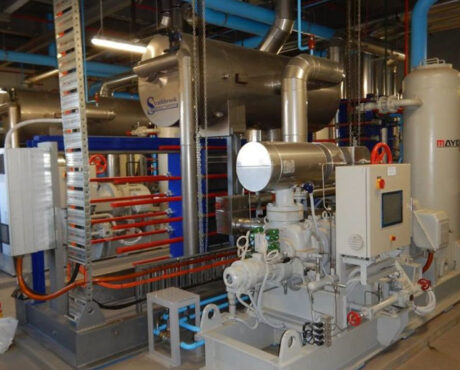Overview
In contrast, many contemporary refrigeration systems utilise element heaters for evaporator moisture removal. These heaters, resembling straightened electric jug elements, reach high temperatures towards the end of the defrost cycle, leading to various issues such as heater element failure, damaged evaporator tubes potentially causing refrigerant leakage, electrical cable and joint failures as well as issues with contactors, overloads, controls and safety components.
Furthermore, electric elements emit substantial heat into the freezer room, necessitating additional cooling upon refrigeration plant restart. This excess heat carries moisture from the evaporator into the freezer room, where it condenses and refreezes on surfaces including ceilings, walls and stored products.
In contrast, warm glycol defrosting dispenses with the electrical system, substituting it with glycol heated by waste heat from the refrigeration plant. During defrost cycles, a pump transfers warm glycol from a storage tank to the evaporators, where its gentle heat effectively melts ice, allowing it to drain without raising temperatures to levels that could reintroduce moisture into the freezer room.
This method ensures a dry, frost-free freezer environment and significantly reduces the cooling load following a defrost cycle, proving to be one, if not the most efficient method.





